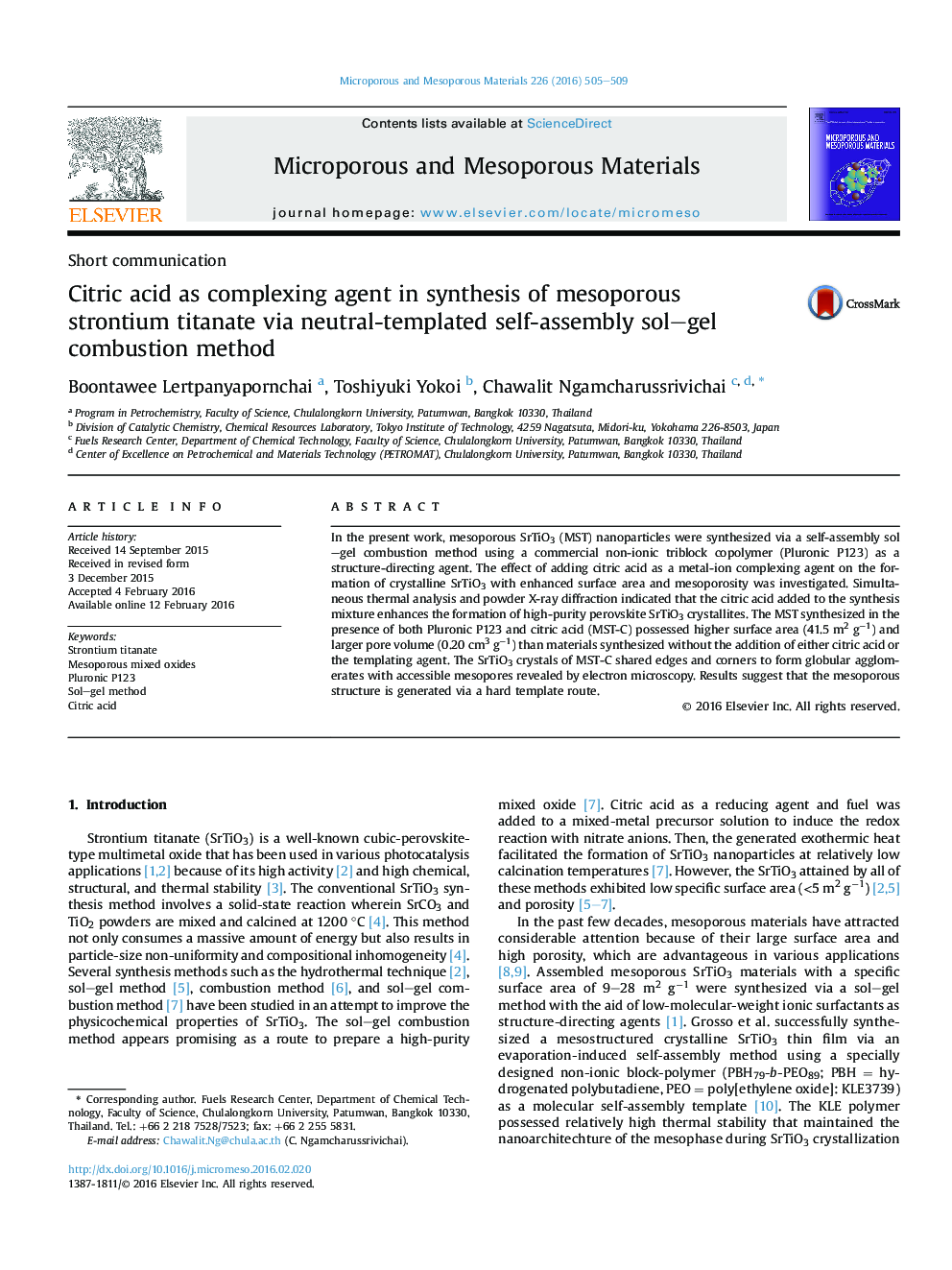| کد مقاله | کد نشریه | سال انتشار | مقاله انگلیسی | نسخه تمام متن |
|---|---|---|---|---|
| 72221 | 49013 | 2016 | 5 صفحه PDF | دانلود رایگان |
• Mesoporous SrTiO3 (MST) was synthesized via self-assembly sol–gel combustion.
• Adding citric acid promoted the formation of high purity SrTiO3 crystallites.
• The presence of both Pluronic P123 and citric acid enhanced the mesoporosity.
• The mesoporous structure possibly generated via a hard template mechanism.
In the present work, mesoporous SrTiO3 (MST) nanoparticles were synthesized via a self-assembly sol–gel combustion method using a commercial non-ionic triblock copolymer (Pluronic P123) as a structure-directing agent. The effect of adding citric acid as a metal-ion complexing agent on the formation of crystalline SrTiO3 with enhanced surface area and mesoporosity was investigated. Simultaneous thermal analysis and powder X-ray diffraction indicated that the citric acid added to the synthesis mixture enhances the formation of high-purity perovskite SrTiO3 crystallites. The MST synthesized in the presence of both Pluronic P123 and citric acid (MST-C) possessed higher surface area (41.5 m2 g−1) and larger pore volume (0.20 cm3 g−1) than materials synthesized without the addition of either citric acid or the templating agent. The SrTiO3 crystals of MST-C shared edges and corners to form globular agglomerates with accessible mesopores revealed by electron microscopy. Results suggest that the mesoporous structure is generated via a hard template route.
Figure optionsDownload as PowerPoint slide
Journal: Microporous and Mesoporous Materials - Volume 226, 15 May 2016, Pages 505–509
